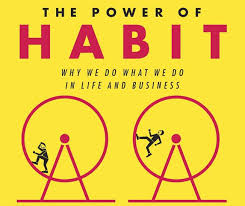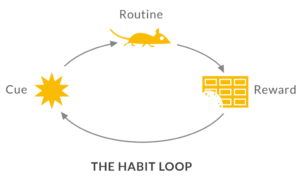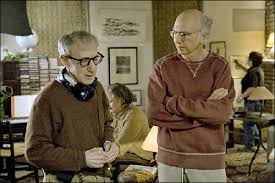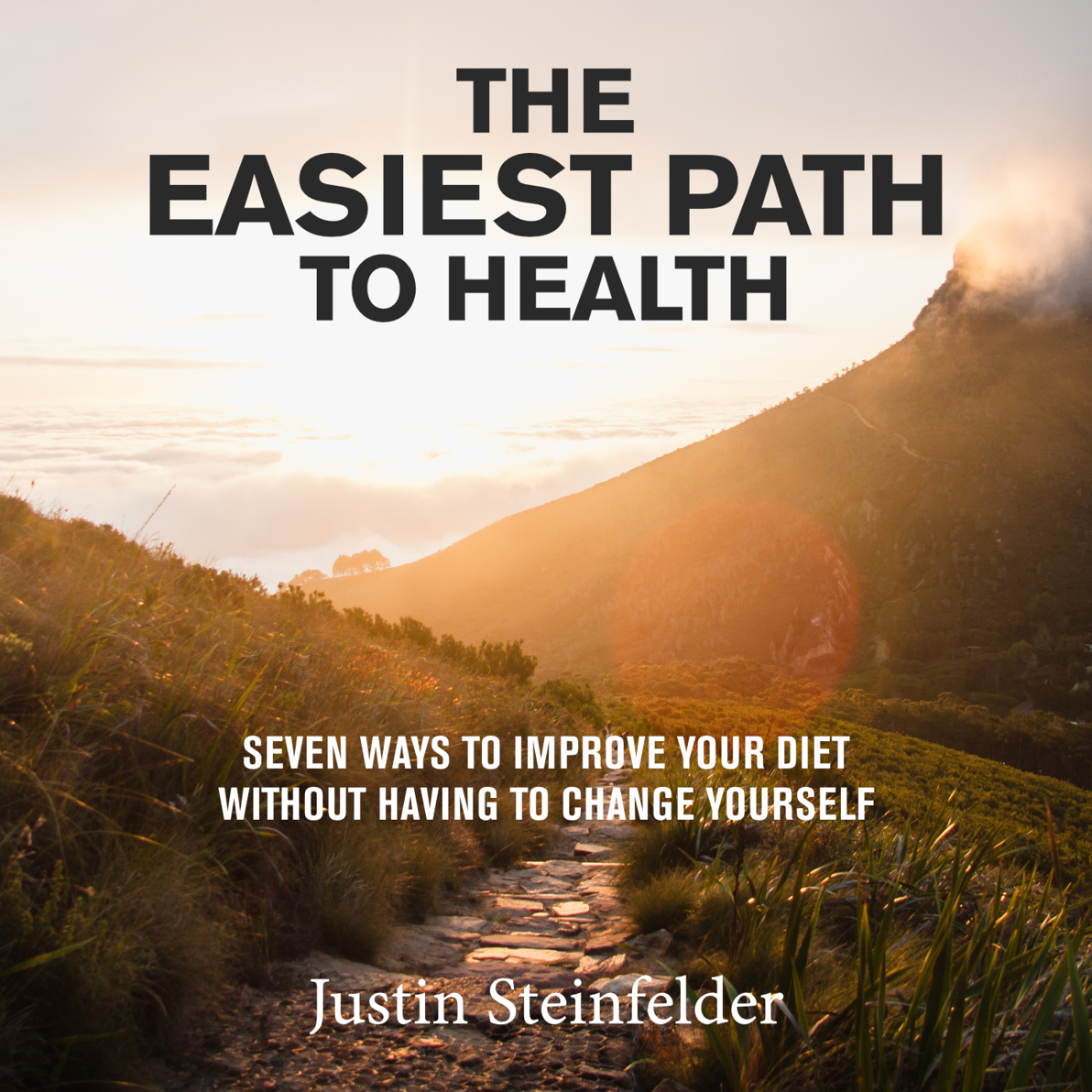Reading Time: Intro / Explanation of idea: 9 minutes; Each of the three habits – 2-3 minutes
[NOTE TO READERS: If you like this article or find it helpful in some way, please let me know (like, comment, email, share). I am considering putting together a little e-book of 25-30 of these habits and I would like to know if they would actually be useful to you.]
SAY WHAT YOU WANT about the movie Avatar, but by the time I walked out of that theater, those big blue bastards had me despising the human race and dreaming of the day I could visit Pandora. Far away from these greedy, evil, Earthlings, I could do things like swing from trees, sleep in trees, and, of course, talk to trees. (Major improvements on my current tree relations: hugging them and peeing on them).
Apart from this fantasy of fleeing this planet for freer, floating mountain tops, I really enjoyed the sequence where  Jake Sully attempts to train his dragon. I found it to be the most salient parallel to my own life out of the entire movie (that or the macho general shouting “get some” while mercilessly machine-gunning a bunch of giant blue natives. That really hit home]. Specifically, the relationship between training dragons and training ourselves to eat healthy.
Jake Sully attempts to train his dragon. I found it to be the most salient parallel to my own life out of the entire movie (that or the macho general shouting “get some” while mercilessly machine-gunning a bunch of giant blue natives. That really hit home]. Specifically, the relationship between training dragons and training ourselves to eat healthy.
Wait..What? What in the sam hell does training dragons have to do with eating healthy?
Good question, Aguato. Stay with me.
Many of us experience daily a paradoxical personal phenomenon. We know what we would like to do, in our lives (or at least should want). We would like to eat broccoli, exercise, be kind, be useful, and, of course, post pictures of us laying with sedated tigers in Thailand. However, often we can’t seem to act in accordance with these intentions. As recent behavioral science has explained, this is, in part, do to more instinctual, animalistic urges built into our evolutionary DNA. It is this instinct in us that I will call here our Dragon.
But then, it seems like some of us are better at it then others. We all have those friends who seem to eat healthy and stay healthy with ease. They never seem to get attracted to that late night pizza, or, experience weak moments with the tub of Chunky Monkey, the bastards. These people I call the Chronically Healthy. Or, a much cooler, robotronic-sounding term, the HealthCrons.
What’s the HealthCron secret? Do these people just have an inhuman amount of “willpower” with which to simply out-muscle their Dragons?
Perhaps. Though, from my reading of the research, even the strongest of wills succumb when pit face-to-face against the awesome might of ze’ Dragon.
Over the last few decades a compelling, alternative (or perhaps complimentary) explanation has been mounting in the area of behavioral science. It appears that both in the lab and in practice, HealthCrons are equally susceptible to the Dragon’s pull towards the Ben & Jerry’s pint as the rest of us. But, there is one big difference:
HealthCrons, knowingly or not, consistently use specific habits, tactics, and, strategies to, in the near term, avoid direct, Dragon confrontations, and, in the long term, slowly train this ghastly beast to make the right decisions.
In this article, I will:
- Describe the recent behavioral research on our Dragons-brains;
- Why developing certain Habits may be the best way to occupy and train our Dragons; and
- Apply this to our diet and health, describing three, research-backed habits of the “Chronically Healthy.”
**As always, if you have zero interest in learning about why we do what we do, and instead just want to get to the habits like a rat pulling a lever for pellets— please, skip to the bottom, ya rat-bastard **
[NOTE TO READERS: If you like this article or find it helpful, in some way, please, please please let me know (like, comment, email, share). I am considering putting together a little e-book of 25-30 of these habits and I would like to know if they would actually be useful to you.]
Two Minds: the Rider and the Dragon
“In a very real sense we have two minds, one that thinks and one that feels.” Daniel Goleman, Emotional Intelligence
We all have two minds, psychologists say. They are described using many different terms in the literature. NYU Psychologist, Jon Haidt, for example, calls them the “Elephant” and the “Rider”.
For the purposes of this article, mostly because it’s much awesome-er, I am recasting the Elephant (no fun) as a Dragon (fun). Who the hell gives a rat’s tuchus about elephants? (Plus, it fits perfectly into my Avatar analogy).
Let me briefly describe this split-mind, starting with that reactive, impulsive mother effin’ Dragon.
Enter the Dragon
The Dragon operates automatically. It is the reactive, instinctual part of our brain. It controls things that we aren’t even aware of— like the heartbeat, breathe, balance, and, obviously, does a bang-up job.
The evolutionary advantage of the Dragon is that it expends very little mental effort. And, given that our brains burn a disproportionate amount of energy compared to their size (20% of calories v. 2% of the mass), efficient thinking has been historically crucial to survival.
Besides operating various bodily systems like heartbeat, the more efficient Dragon is also ideal for “mastery” of tasks. When athletes become masters of their sport, for instance, the process is about transferring skills and actions, as quickly as possible, from the more deliberate / analyzing part of our brain (the Rider, which I’ll get to below), to instinct.
For example, staring down a pitch, the expert baseball batter doesn’t have time to rely on reason. Ideally, they’d see the pitch and instinctually react with precision. As Yogi put it, “how can you think and hit at the same time?” This takes hours and hours of deliberate practice (perhaps 10,000).
The problem comes when we rely on our Dragons prior to trained mastery, or in areas where mastery may not be applicable. In these situations, our automatic Dragon consistently leads us astray. There are three available responses to this problem, and only one of them seems to consistently work.
Our first attempt to solve the problem is to try and overpower the Dragon. Mind over matter, we think to ourselves, as we stare at that mouthwatering ice cream cake in the office kitchen. But, the Dragon, as you’ve probably noticed, it quite strong. When we try to overpower it, we end up like Ace Ventura in the Circle of Death. (“Ace, he much betta fighta than you…”).
This means that if our Dragon gets pissed off, or attracted to another Dragon, or sees a big chunk of Dragon-chocolate at the top of a volcano, we will have very little power to stop him. Ever try to stop the Dragon from inhaling a jar of peanut butter? Impossible.
Our second feckless tactic is to reason with it. Ok, you can have one bite of Dragon peanut butter, but after that, we have to put it away! This is cute, but rarely will we have the reasoning strength to stop the Dragon once he has started “popping” (needless to say, we are altogether hopeless in the presence of Dragon Pringles).
The third attempt—the only hope we have— is to keep the Dragon out of trouble. And for that, we need help from the reasonable Rider.
The Reasonable Rider
The Rider is conscious and calculating. It’s our more deliberate, reasonable self — the one we typically identify with. The Rider is the thinking, reflective little guy manning the controls behind your eyes. Cool, calm and rational, the Rider takes a deep breath after being cut off in traffic, take 10 minutes to think about a thoughtful, constructive reply to that enraging, stupid email and, decides not to bring that jar of Skippy to the couch.
The downside of the Rider is lazy and weak. When faced head to head with the Dragon, the Rider will accept nearly any rationalization and can be easily overpowered. Say the Rider catches the Dragon eating some Dragon chocolate— almost any argument will work: “Oh it’s just a little bit— plus, I worked out twice this week!” The Rider caves faster than Tommy Boy on a brake-pad pitch.
And this is why the Rider needs to act when the Dragon is sleeping or not paying attention. He needs to set into motion systems and processes that keep the Dragon out of trouble and place the Dragon in the best possible situations for success.
These systems and processes are the ones HealthCrons consistently employ to get their Dragons to behave in specific, desirable ways. To make the behaviors “consistent” takes automation and automation requires the work of the Rider.
The process of automation is the process of creating habits. This process has been heavily studied as of late, and a particular Pulitzer-Prize-Winning Journalist has laid it all out for us.
The Power of Habit

The journalist and best-selling author, Charles Duhigg, while on assignment in Iraq, became fascinated by the efficiency and effectiveness by which the military instills new behaviors in its cadets. People who enter the military unable to even boil an egg, come out as completely independent, shit-kickers (though I’m unsure about egg-boiling prowess).
When Duhigg asked a notable general what his secret was, he told him it was all about teaching habits. Like many of us, Duhigg was familiar with the term colloquially, but had trouble defining just what a “habit” actually was, or how to train for it.
Duhigg, intrigued, dove into the topic, researching all the current science that he could find— how they work neurologically to how we can change them. The result was his mega-best-seller, “The Power of Habit.”
Much of the book is defining what habits are – basically the daily actions of the Dragon – and how they operate much of what we do. Duhigg describes the process known as the Habit Loop, to describe how habits drive us to nearly unconscious action.
A quick Habit Loop example. The Loop is composed of three components: (1) the cue, (2) the behavior, and (3) the reward. For example, each time you get stressed, you tend to reach for some food, and then get the reward of the dopamine release that comes with food anticipation. The stress is the cue, the behavior is the food hunt, the reward is the very brief satisfaction you get from the dopamine release.
One of the key elements is that bad habits (or disgusting ones) cannot be destroyed, only replaced by other, hopefully good, habits.
(For more on that, here’s Duhigg’s breakdown Of the Habit Loop).
The book’s principal message is ultimately a positive one, concluding in two main points:
- We have the ability to step into the Habit Loop and rewrite or influence our automatic Dragon; and
- We have the responsibility to do so
“This is the real power of habit: the insight that your habits are what you choose them to be. Once that choice occurs—and becomes automatic—it’s not only real, it starts to seem inevitable, the thing, as [William] James wrote, that bears ‘us irresistibly toward our destiny, whatever the latter may be.’
Whatever Works: A Quick User Guide to These Habits

In Gretchen Rubin’s book, Better than Before, she documents herself, friends and readers trying out different habits and recording what happens. And one of her major findings is this fact: everyone is different. Some habits work for some people better than others, and vice versa.
“The most important thing I’d learned during my study of how we change our habits? We can build our habits only on the foundation of our own nature.”
Ultimately, you’ll have to try a bunch and find out for yourself. As Bruce Lee said
“Research your own experience. Absorb what is useful, reject what is useless, add what is essentially your own.”
Hi-YA (fake karate chop).
Or, as Woody Allen put it in a less Zen / Karate-choppy way: “whatever works.”
Three Habits of The Chronically Healthy
HEALTH-CRON HABIT #1: They Are “Choice Architects”:
Set Up Your Environment To Increase Likelihood of Healthy Behavior
“small and apparently insignificant details can have major impacts on people’s behavior. A good rule of thumb is to assume that “everything matters.” In many cases, the power of these small details comes from focusing the attention of users in a particular direction.” Nudge, Sunstein and Thaler
“Why couldn’t you have made me an architect?! You know I always wanted to pretend I was an architect!!” George Costanza, Seinfeld
The Situation
You mostly purchase healthy food at Whole Foods, but you also will splurge to get something like a box of cookies.  This is not an issue in and of itself. But you keep the cookies on the counter, creating a continuous, magnetic pull. You walk by them with no problem the first couple times, but by the 30th time you pass those bad boys, your will is sapped, you sprout blue hair and bubbly eyes, and start spouting out: “C” is for Cookie, that’s good enough for me. But, in our case, a cookie-Dragon.
This is not an issue in and of itself. But you keep the cookies on the counter, creating a continuous, magnetic pull. You walk by them with no problem the first couple times, but by the 30th time you pass those bad boys, your will is sapped, you sprout blue hair and bubbly eyes, and start spouting out: “C” is for Cookie, that’s good enough for me. But, in our case, a cookie-Dragon.
The Science
Psychologists talk about a cognitive flaw called the fundamental attribution error. This is a fancy, psychology-ish way of saying that when we walk into that cookie-trap, and inevitably succumb to it’s chocolatey goodness, we mistakenly think it is a flaw of our character (“I just don’t have the discipline”). But, as research has shown, the flaw may more often be borne out of context or environment.
That is, you might have just as much discipline as a HealthCron, but because your kitchen is bobbie-trapped with tricks and treats, you force yourself to use more willpower than if you had created a risk-free Biodome in the first place. The Rider tires easily from pulling back the Dragon reins.
“when it comes to changing [one’s] own behavior, environmental tweaks beat self-control every time.” Switch, Heath Brothers
So how do we alter our context? Cornell’s Brian Wansink has suggested many practical tips for solving this contextual issue. You might be incredulous due to the simplicity, but the results speak for themselves.
HealthCron Actions.
(1) Put Healthy Things in Plain Sight. Due, in part, to our hunter-gatherer instincts, when we see food, our body is trained to eat it now. In the jungle, you never know when you’ll eat again. Therefore, we are all, to some degree, on the “See-food” diet. If that’s the case – make sure you control what you see.
Actions:
- Put fruits and veggies on the counter
- Pack your gym bag and leave it in your car or by the door.
- The Superman. Depending on what you have to wear to work and the bulk of your gym attire, you can wear your gym clothes underneath. The rest is easy: (1) find phone booth, (2) rip off work clothes, and (3) “Superman that ho”
- Note to Women – this is a joke, I do not condone, nor do I even really understand, “supermanning of hos”)
(2) Hide Unhealthy things. It’s great if we have veggies on the counter, but they are never going to win the fight for attention over a more attractive, less nutritious option. E.g You would never choose the broccoli over the Stacy’s garlic pita chips.
Actions:
- Hide Junk Food. Don’t have to trash it (though that is ideal), but hide it.
- Lock it Up. Put it in a cabinet with a lock on it and give that lock to your significant other
- NOTE: This may still create a draw as you know it is forbidden fruit. Below I get to how to solve that problem as well (that’s what we in the biz call a well-placed cliff-hanger).
(3) Buy Smaller Plates. We are prone to finishing what’s on a plate (especially if we have a Jewish mother). But, research shows that if the same amount of food is on a smaller dish, our brains will signal we are full faster.
Actions:
- Ditch Big. Get rid of your big glasses, plates, and utensils. If you are eating out, ask for side plates.
- REVERSE EFFECT: If you want to take advantage of this – put healthier things on bigger plates, and unhealthy things (if you must) on smaller plates. Start with the healthy.
HEALTH-CRON HABIT #2: They Are Mindful, Not Mindless

dreamstime.com
“The basic rule: distractions of all kinds make us eat, forget how much we eat, and extend how long we eat—even when we’re not hungry.” Cornell Researcher Brian Wansink, Mindless Eating
“Self-love is a good thing, but self-awareness is more important. You need to once in a while go, ‘Uh, I’m kind of an asshole.’” Louis C.K. (Ironic, Louie…)
The Situation
We come home from work, we’re tired and hungry, and all we want to do is sit on the couch, order some food, and turn on ESPN, CNN, or the Handmaids’ Tale. If you’re not careful, one ep of Orange is The New Black, and that Tupperware full-a-pasta may become the new… empty. For me, I offer from experience Exhibits A, B and C: entire jars of peanut butter, entire boxes of Honey Bunches of Oats, and dressed-up pints of cottage cheese.
Theoretically, I have no issue with this. After all, you (probably) did work hard and you do deserve some down time. But, you also don’t want to necessarily consume 1500 calories while in the process. It can be hard to draw the line. So, what do we do?
The Science
In one of his famous experiments, Wansink served popcorn to movie-goers that was purposely made to be stale and gross (patrons later confirmed this). But, even in spite of this – they ate it, and a lot of it. (Those served bigger containers ate more, despite how hungry they were or amount in the container).
When we distract ourselves, such as with TV, the Rider loses the ability to temper Dragon consumption. As a result, whatever is in our hands is subject to a million-year-old instinctual command to eat food when you have it.
HealthCrons Actions.
There are three ways we can attack this. I’ll start with the more strict, “hard” ways, down to the low-effort, “easy” routes:
The Hard Ways:
- Abstinence. No, I am not suggesting cutting down on Pardon the Interruption, Anderson Cooper, or Transparent Abstinence means do not bring the food to the couch. Eat at the dinner table, TV off. (Chasity belt optional)
- “Mindful Eating” (i.e. Self-Awareness). Yes, I know “mindful eating” sounds just “too LA” to actually be effective, but early research is promising. People who eat mindfully —focusing only on the food in your mouth, the sensations, eating slowly, etc— seem to make healthier choices and eat less. Oh, they also actually enjoy their food. Here is how to do it.
The Medium Way.
- Bring Strategically Good or Limited Food To the Couch. Decide exactly what you want to eat and only bring that to the couch. You aren’t going to be upset if you distractedly demolish a kale, lentil and avocado salad. In fact, this might make the kale taste less like you just mowed an athletic field with your mouth. IF you’ve cooked something, right away, fill a small plate, then get the rest into fridge-bound Tupperware.
The Easy Way
- Expect to Fail (i.e. Self-Compassion). The easy way is just a mindset. I know that when I bring something over to the couch, I am going to likely finish the whole thing. One of the major problems with mindless eating, is we somehow don’t expect that we will eat these things, and then we are self-critical. Better to plan for it, count on it, and then be self-compassionate. “Yes, I finished what was in front of me – that’s normal for a human with my evolutionary makeup (and with a Jewish-mom upbringing).”
HEALTH-CRON HABIT #3: Coach Bill Walsh’s Contingency Planning

“I don’t care how smart or quick-witted you are, what your training or intellect is; under extreme stress you’re not as good. Unless, that is, you’ve planned and thought through the steps you’re going to take in all situations—your contingency plans.” Hall of Fame NFL Head Coach, Bill Walsh, The Score Takes Care of Itself
“Give me six hours to chop down a tree and I will spend the first four sharpening the axe.” Abraham Lincoln
“It does not do to leave a live dragon out of your calculations, if you live near him.” J.R.R. Tolkien, The Hobbit
The Situation.
Most coaches have a game plan— sketch out the game for how they want it to go. But, NFL Hall of Fame coach, Bill Walsh, saw things differently. He learned from reading military war books, a strategy much more comprehensive (and realistic) than that — a strategy known in the military as “war gaming.”
Walsh looked at every potential scenario (or as many as he could think of) and imagined several different outcomes – worst-case, medium case, best case. And then, he planned for how he would react if each scenario occurred.
The result was that when “unexpected”or “unlucky” situations occurred (as they consistently do), Walsh did not have to depend on his heat-of-the-moment reactions (i.e. Dragon actions). He was likely to have anticipated this or a similar circumstance. He had a plan.
The Science
Most of us plan for the best-case scenario. This is called the “planning fallacy.” This kind of thinking can lead us into trouble when bad, unplanned for things occur (as seems inevitable). Many times this will throw us off our original plans to go to the gym after work or eat healthily at that work event.
Walsh’s experience has taught him that Contingency Planning does a good job thwarting this issue. And a similar concept has been tested and confirmed by social scientists in both the lab and real-life scenarios. It’s called “intention implementation.”
When using this strategy, everyone benefits significantly — from physical therapy patients to the pill-taking compliance of the elderly to getting recovering drug addicts to draft resumes (in that case, the increase in follow-through was 80 percent).
HealthCron Actions.
When we want to do something, whether it is eat healthy or get to the gym, we have to be intentional about it, and we must anticipate obstacles ahead of time, and actually WRITE THEM DOWN. Otherwise, we are leaving it to ourselves to beat the enticing aromas of great, but unhealthy, foods, or the allure of the couch over the treadmill. We are subjecting ourselves to the whims of that pesky Dragon.
ACTION: — write down:
(a) WHAT you want to do,
(b) Exactly WHERE and WHEN this will occur and
(c) ANTICIPATE and plan for OBSTACLES and write HOW you will OVERCOME them.
For example: I want to go to the gym tomorrow after work. So, after work tomorrow, at 5PM, instead of going home, I will walk to Gold’s Gym and run on the treadmill for 30 minutes. If it is raining, I will take an Uber. If I am hungry at 4PM, to avoid using that as an excuse, I will eat that package of raw almonds I have in my desk drawer. If I am tired, I will think about how good I will feel and how much better I will sleep if I get just 30 minutes of moderate exercise.
This solution seems too simple and obvious to work. But, the research in and out of the lab has shown some of the most compelling results in all of social science research.
Give it a try. You may surprise yourself.
AND THAT’S IT FOLKS. Those are just three of the habits you can start to implement to begin to corral the Dragon and get yourself closer to health. Just imagine these habits are one step to hooking your long pony tail into the Dragon’s hangy thing, just like Jake Sully. And then, hop on and go destroy those evil humans!!!
A HUMBLE REQUEST: If you liked this article or found it helpful, in some way, please, please please let me know (like, comment, share, email). I am considering putting together a little e-book of 25-30 of these habits and I would like to know if they would actually be useful to you.
Besos and stay healthy,
Justin


2 Comments on “Habits of The Chronically Healthy”
Really like this article. I could really relate to some of those situations in which the dragon wins. Great strategies and ideas to trick the dragon.
Thanks, Jord. Good to know there’s some value in it. That Dragon is a bastard.